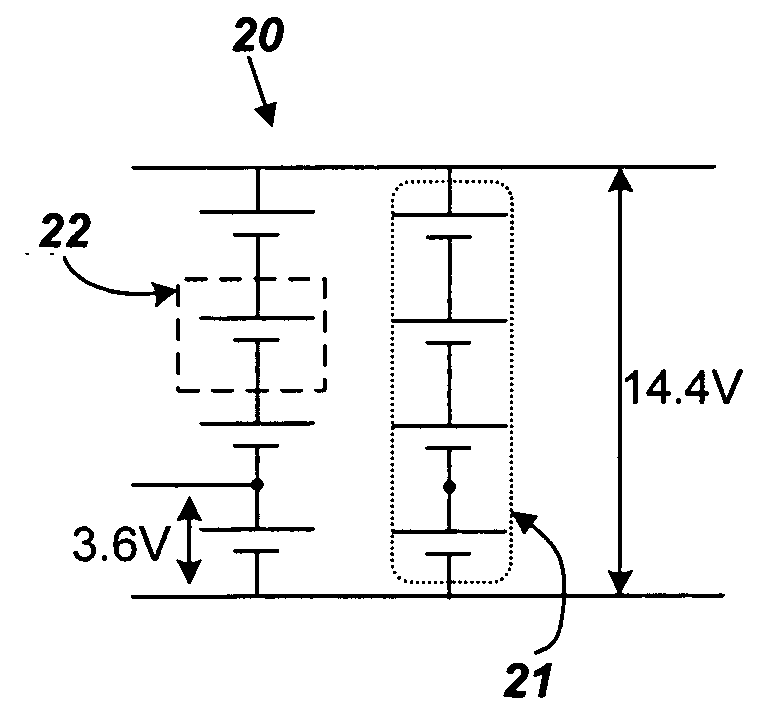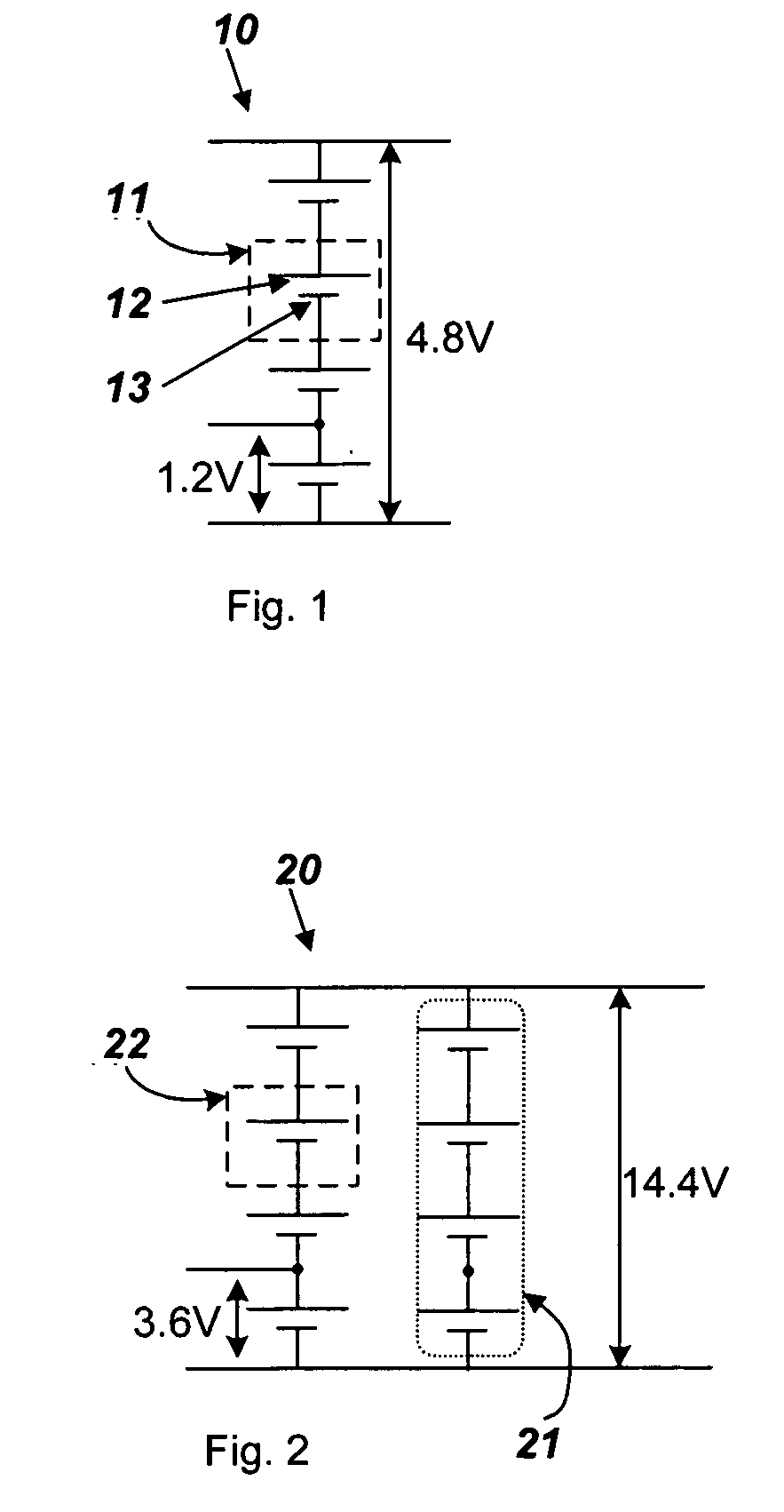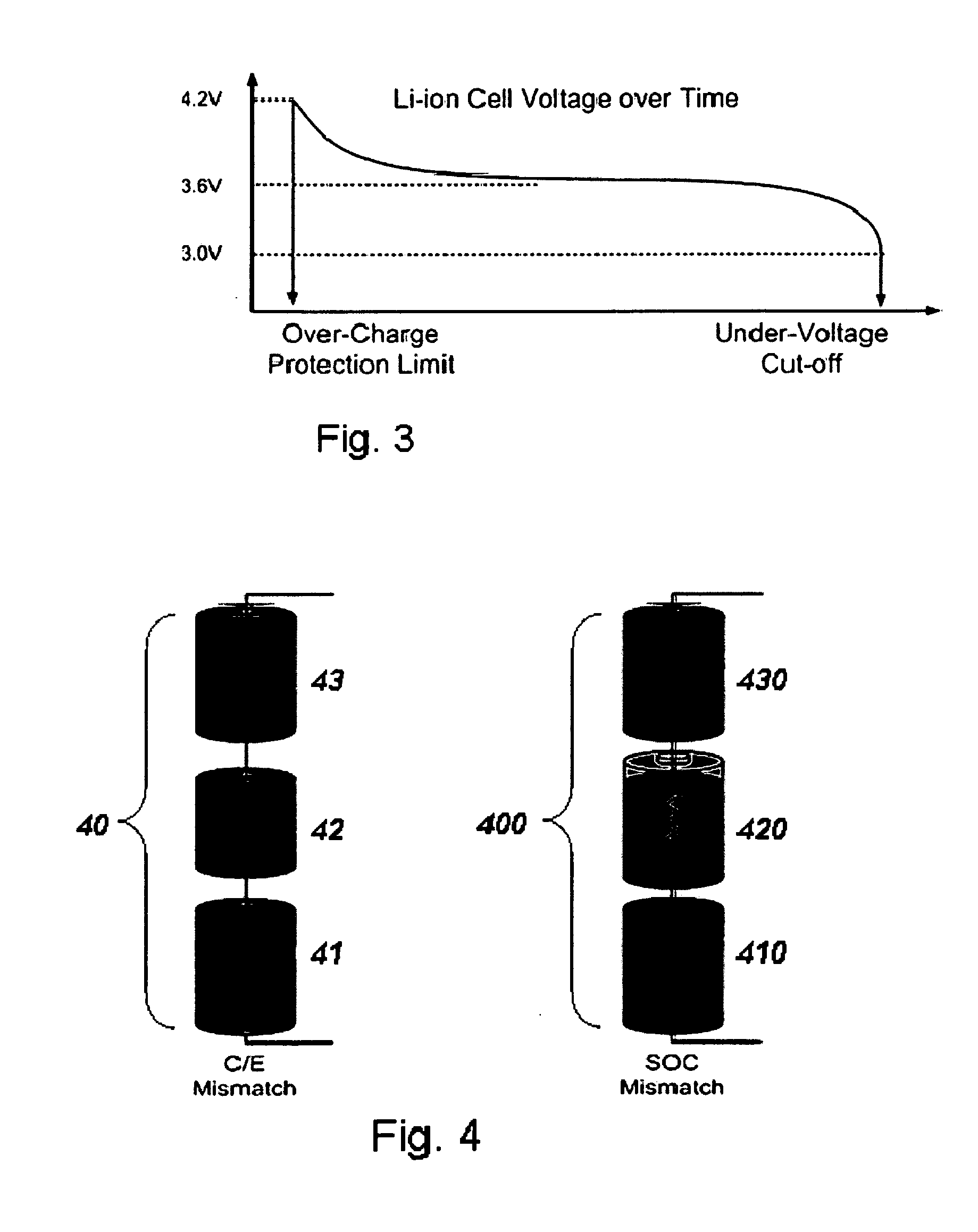Battery-Cell Converter Management Systems
a technology of converter management and battery cells, applied in the direction of charging equalisation circuit, transportation and packaging, and arrangement of several simultaneous batteries, can solve the problems of battery cell damage, battery quickly dies out, battery damage, etc., and achieves the improvement of battery per charge use time, battery pack manufacturing cost, and battery pack li
- Summary
- Abstract
- Description
- Claims
- Application Information
AI Technical Summary
Benefits of technology
Problems solved by technology
Method used
Image
Examples
Embodiment Construction
[0033]Disclosed herein in exemplary embodiments are a series of new system configurations and new methodologies which include the coupling of one or more DC / DC converters to one or more battery cells. These system configurations, herein referred to as Battery Cell Converters (BCC), provide a near constant voltage output or near constant multiple voltage outputs; the system topologies and algorithms also optimize the usage and reliability of individual battery cell as well as the battery pack system as a whole.
[0034]A block diagram of a multi-cell BCC system is shown in FIG. 5a. BCC unit 50a comprising one or more energy-storing battery cells 51a, one or more DC / DC converters 52a each having input and output terminals; terminals of the energy-storing battery cells are coupled to or integrate with input terminals of one or more of said DC / DC converters via 53a; There are one or more BCC system outputs (V1, V2, . . . ), which are also outputs of DC / DC converters; and a monitoring & con...
PUM
 Login to View More
Login to View More Abstract
Description
Claims
Application Information
 Login to View More
Login to View More - R&D
- Intellectual Property
- Life Sciences
- Materials
- Tech Scout
- Unparalleled Data Quality
- Higher Quality Content
- 60% Fewer Hallucinations
Browse by: Latest US Patents, China's latest patents, Technical Efficacy Thesaurus, Application Domain, Technology Topic, Popular Technical Reports.
© 2025 PatSnap. All rights reserved.Legal|Privacy policy|Modern Slavery Act Transparency Statement|Sitemap|About US| Contact US: help@patsnap.com



